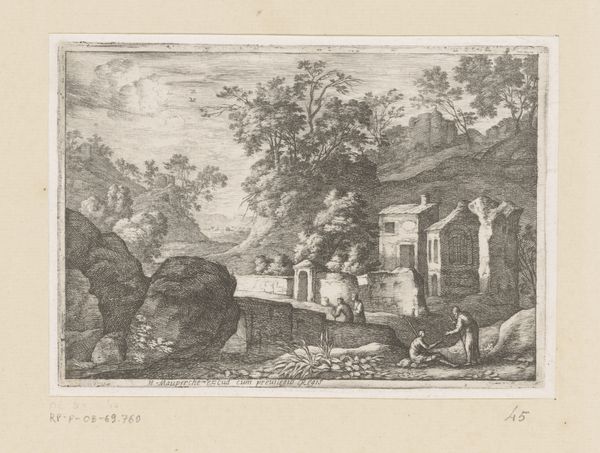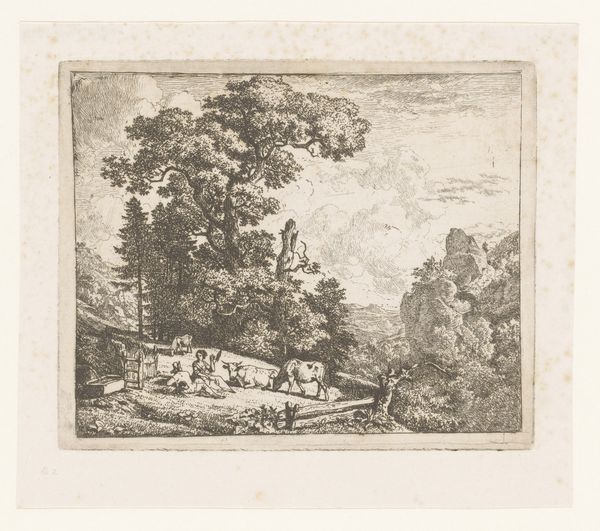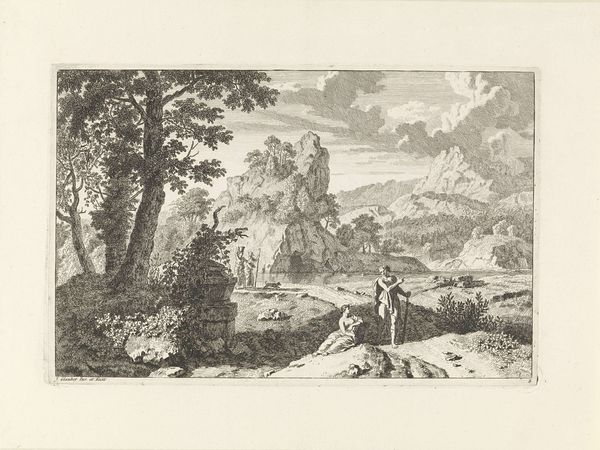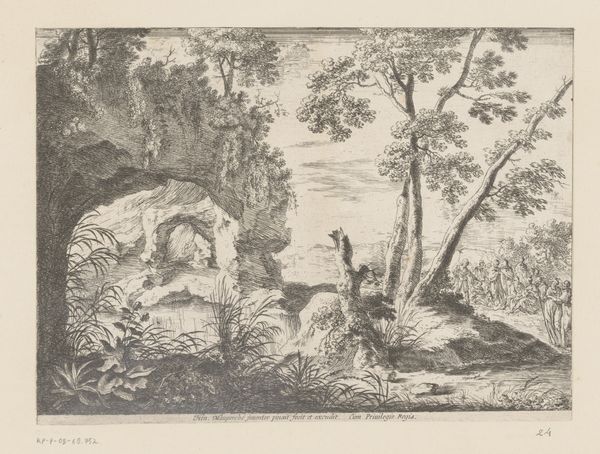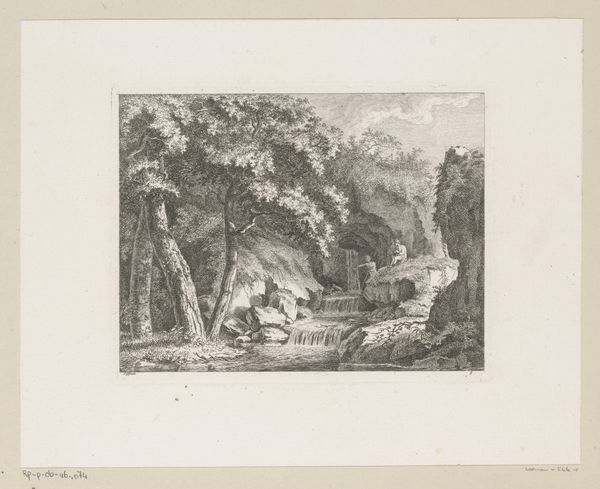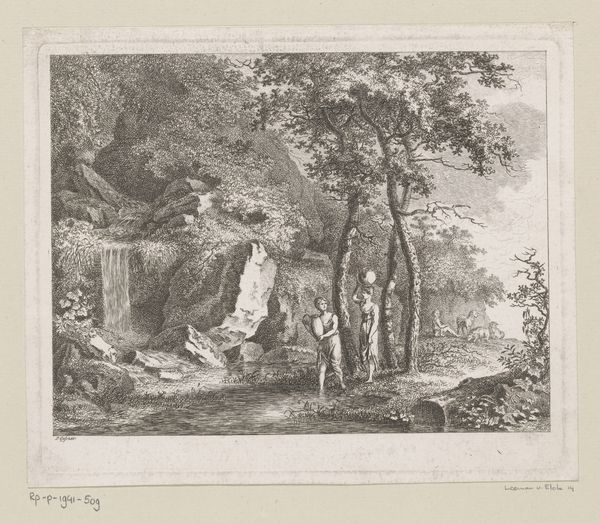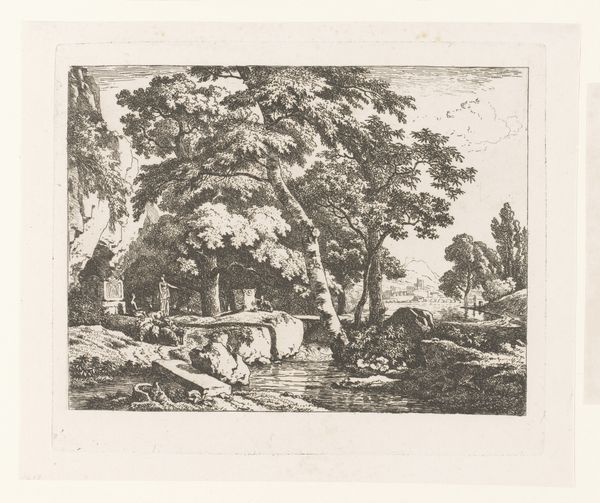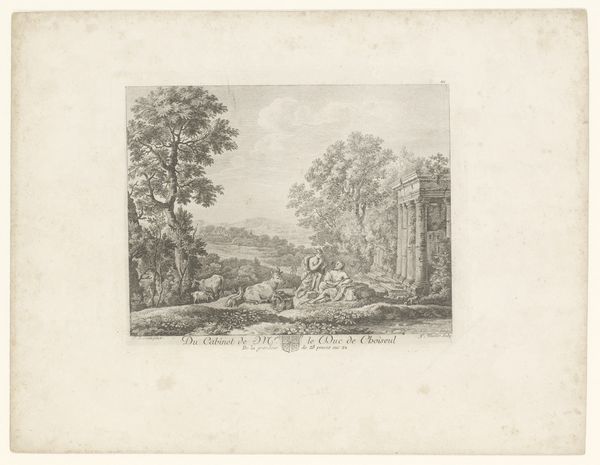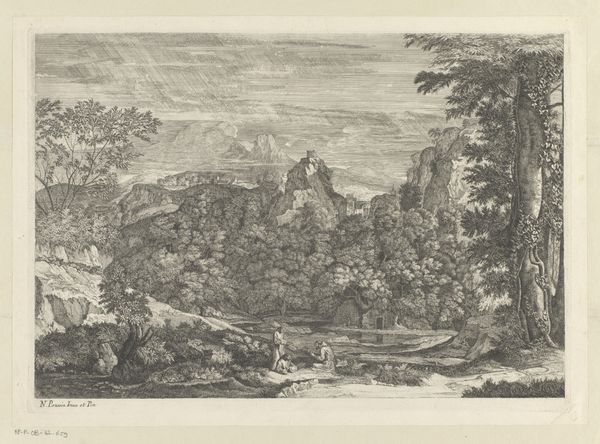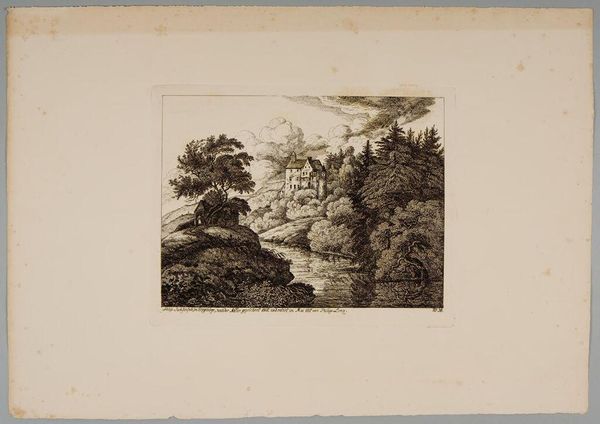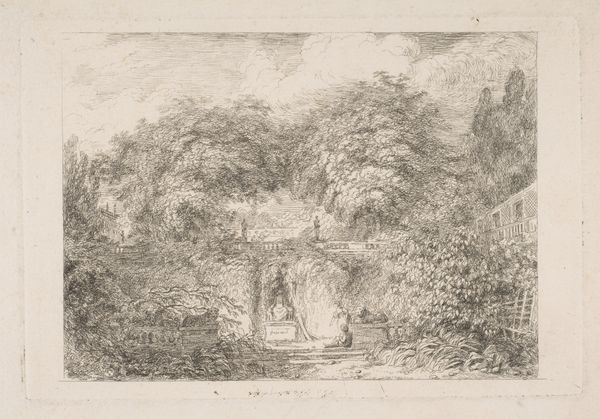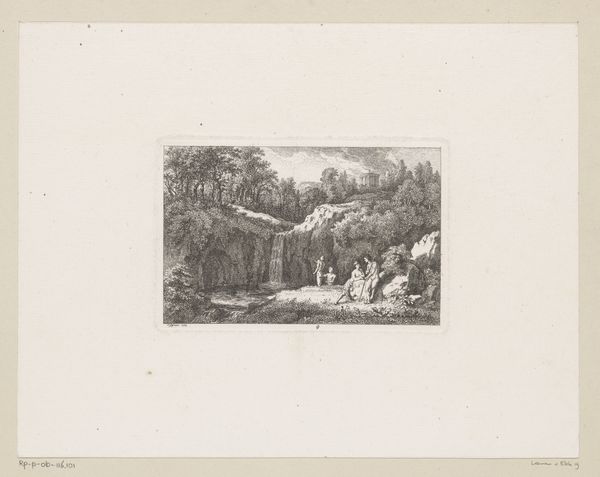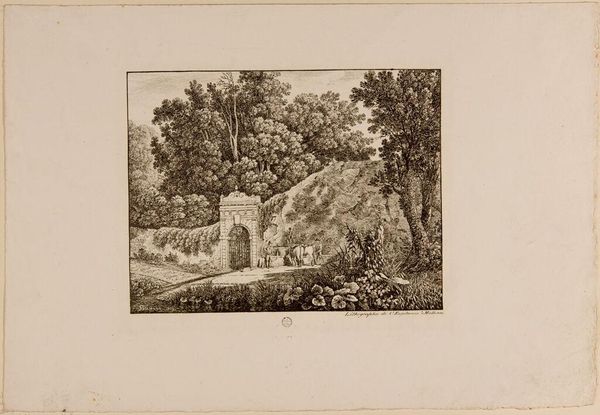
drawing, print, etching, paper
#
pencil drawn
#
drawing
# print
#
etching
#
landscape
#
paper
#
romanticism
Dimensions: 247 × 355 mm (image); 280 × 380 mm (plate); 278 × 501 mm (sheet)
Copyright: Public Domain
Jacob Wilhelm Mechau created this etching of Civita Castellana. The image reflects the period’s fascination with the Italian landscape, but it also speaks to the changing social role of the artist. During the late 18th century, artists like Mechau were increasingly independent, selling their work on the open market rather than relying on aristocratic patronage. Etchings like this one catered to a growing middle class interested in travel and culture. The image itself presents a picturesque view of the Italian countryside, hinting at classical ruins, and a simple life close to nature. But it's also carefully composed, designed to appeal to educated tastes and reflect the artist’s skill. To fully understand this work, scholars might consult travel journals from the time, records of art sales, and biographies of artists who, like Mechau, negotiated the changing art world of the late 1700s. The meaning of art is always tied to its social context.
Comments
No comments
Be the first to comment and join the conversation on the ultimate creative platform.
